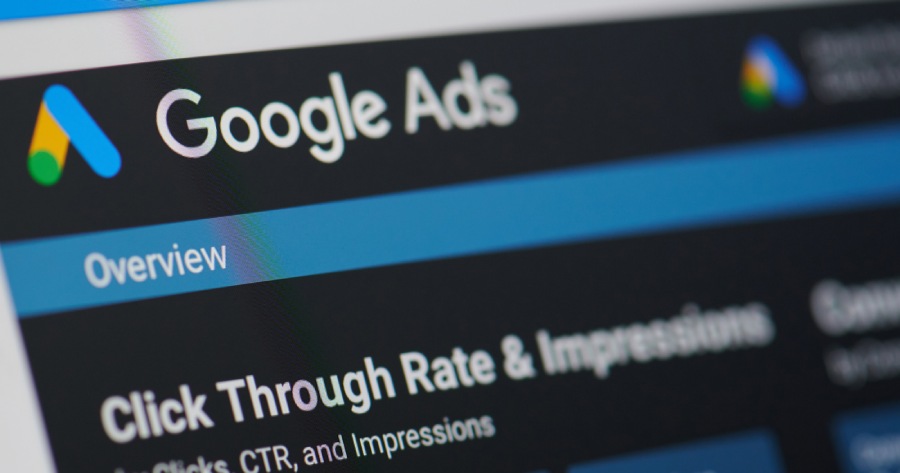Question: what is one way that a performance planner helps businesses increase sales?
1. By choosing ad types that your target demographic finds most appealing
2. By relying on customer feedback for optimal ad placement
3. By providing a discount on all ads after purchasing a license
4. By maximizing the number of conversions for a spend scenario
Answer: D. By maximizing the number of conversions for a spend scenario
By maximizing the number of conversions for a spend scenario is the correct option what is one way that performance planner helps businesses increase sales. Now let’s see the full explanation of the answer. First, let’s see what the performance planner is and how it works.
What Is A Performance Planner?
In the world of online advertising, a performance planner is a tool offered by Google Ads. To understand what is one way that a performance planner helps businesses increase sales the proper functions of the performance planner are also important.
It basically helps you make the most out of your advertising budget. It allows you to experiment with different ad strategies without actually implementing them, giving valuable insights before you commit to your budget.
Here’s the gist:
- You create a plan for your ad spend.
- You can see forecasts on how your campaigns might perform.
- The planner lets you experiment with adjustments to your campaigns, like budget changes or adding new keywords.
- Based on these adjustments, it predicts how your key metrics and overall performance might be affected.
- This way, you can optimize your campaigns and get the best bang for your advertising buck. It’s like having a crystal ball for your online ads, helping you make data-driven decisions.
How Do You Use Google Performance Planner To Increase Your Ad Performance?
The world of online advertising can be a balancing act. You want to see results, but you also need to manage your budget effectively. Google Performance Planner steps in as your secret weapon, helping you optimize your campaigns and maximize ad performance.
Finding the Efficiency Sweet Spot. Performance Planner shines when it comes to allocating your budget strategically.
Here’s how to use it to find the perfect balance:
1. Selecting the Right Campaigns:
Start by choosing campaigns that share a common goal, like driving website traffic or generating leads. This ensures the planner delivers the most accurate forecasts when you simulate budget shifts. Having a mix of campaigns with different goals can still work, but the forecasts may be less precise.
2. Running Budget Allocation Simulations:
This is where the magic happens. Performance Planner allows you to experiment with different budget allocations and see their projected impact. Here are some ways to use this feature:
Shifting Budgets to Top Performers: Identify your high-performing campaigns (those exceeding conversion or click goals) and consider allocating more budget to them. The planner will show you the potential increase in conversions or clicks you can expect with this shift.
Seasonal Adjustments: Is there a specific time of year when your conversions typically spike? You can simulate increasing the budget during those peak periods and see the projected rise in conversions compared to the additional cost.
Finding the Budget Sweet Spot: Don’t be afraid to experiment! Try allocating different budget percentages across your campaigns and see which scenario leads to the most significant improvement in your chosen key metric (conversions, clicks, etc.).
3. Optimizing Budget Distribution:
Once you’ve run your simulations, analyze the results. The goal is to find the ideal budget split across your campaigns that maximizes your return on investment (ROI). Here’s what to look for:
Cost-per-acquisition (CPA): Does increasing the budget in one campaign significantly inflate the CPA without a proportional increase in conversions?
Overall Conversion Rate: Is the projected overall conversion rate across all campaigns significantly higher with a specific budget allocation?
Ultimately, the best budget distribution is the one that delivers the most conversions or desired outcomes within your budget constraints.
Testing Campaign Tweaks: Predicting Performance Before Implementation
Performance Planner isn’t just about budgets; it’s also a valuable tool for testing potential campaign adjustments.
4. Simulating Bid Adjustments:
Bids are the amount you’re willing to pay for a click on your ad. Performance Planner allows you to simulate the impact of increasing or decreasing bids on specific keywords or demographics. You can see how these adjustments might influence:
Clicks: Will a higher bid attract more clicks, potentially leading to more conversions?
Conversions: Does increasing the bid for a specific keyword or demographic result in more conversions, even if it also means fewer clicks overall?
Overall Cost: How will these bid adjustments affect your total ad spend?
5. Experimenting with Campaign Settings:
Beyond bids, you can test the potential effects of changing campaign settings. Here are a few ideas:
Targeting Options: Consider simulating how broadening or narrowing your targeting options (like location or demographics) might affect reach and conversions.
Ad Extensions: Adding ad extensions like call buttons or location information can increase click-through rates (CTRs). Use the planner to see if that holds true for your campaigns.
Negative Keywords: Are there certain search terms that trigger irrelevant clicks? Adding negative keywords can help filter them out. The planner can predict how this might affect clicks and potential conversions.
By testing these adjustments in the planner before implementing them, you can make data-driven decisions that optimize your campaign settings for improved performance.
How To Use Performance Planner More Successfully?
You know increasing the lead is the correct answer to what is one way that performance planner helps businesses increase sales. Now let’s see what are the other uses of the performance planner.
Define Your Goals:
Before diving into the planner, clearly define your desired outcomes. Are you aiming for more conversions (sales, leads), increased website traffic, or brand awareness? Knowing your goals helps you focus on the most relevant metrics in the planner (conversions, clicks, impressions, etc.).
Campaign Selection:
Choose campaigns with similar goals when using the planner for budget allocation simulations. This ensures the forecasts are more accurate when you test different budget distributions.
Run Budget Simulations: This is the core strength of the planner. Use it to experiment with different budget allocations across your campaigns.
Shift budgets to high performers: Identify campaigns exceeding conversion or click goals and consider allocating more budget to them. See the projected increase in conversions with this shift.
Adjust for seasonality: Is there a time of year with higher conversions? Simulate increasing the budget during those periods and see the projected rise in conversions compared to the additional cost.
Find the sweet spot: Try allocating different budget percentages across campaigns and see which scenario leads to the most significant improvement in your chosen key metric (conversions, clicks).
Analyze and Optimize: Once you’ve run simulations, analyze the results. The goal is to find the ideal budget split that maximizes your return on investment (ROI). Consider factors like cost-per-acquisition (CPA) and overall conversion rate across all campaigns.
Testing and Refining Campaigns:
Without testing and refining campaigns the answer what is one way that performance planner helps businesses increase sales answer will be incomplete.
Simulate the bid adjustments. Bids are the amount you’re willing to pay for a click on your ad. Use the planner to simulate the impact of increasing or decreasing bids on:
Clicks: Will a higher bid attract more clicks, potentially leading to more conversions?
Conversions: Does increasing the bid for a specific keyword or demographic result in more conversions, even if it means fewer clicks overall?
Overall Cost: How will these bid adjustments affect your total ad spend?
Experiment with Settings: Beyond bids, you can test the potential effects of changing campaign settings:
Targeting Options: Simulate how broadening or narrowing your targeting options (like location or demographics) might affect reach and conversions.
Ad Extensions: Use the planner to see if adding extensions like call buttons or location information might increase click-through rates (CTRs).
Negative Keywords: Simulate how adding negative keywords to filter out irrelevant clicks might affect clicks and conversions.
Continuous Improvement:
Focus on Trends, Not Fluctuations. The planner’s forecasts are based on historical data and trends. Look at the broader trends within the forecasts to identify patterns and make informed decisions, rather than getting hung up on minor day-to-day variations.
Regular Review and Adaptation: Market conditions and campaign performance can change. Revisit the Performance Planner periodically to adjust your strategy and budget allocation as needed. This ensures your campaigns stay optimized for the best possible performance.
By following these steps, you can leverage Google Performance Planner as a powerful tool to optimize your online advertising efforts. Remember, it’s all about using simulations to test different scenarios, finding the best budget allocation, and refining your campaigns for maximum efficiency and performance.
In Conclusion
Hope to now get a complete idea of why option d is the correct option of what is one way that performance planner helps businesses increase sales. Google Performance Planner isn’t a magic bullet, but it’s a powerful tool for data-driven decision-making in online advertising. By leveraging its functionalities, businesses can significantly increase their chances of boosting sales.
Read More:
- How Can Google Ads Help You Advance Your Business Goals?
- When Linking A Google Ads Account To Google Analytics, What Is Not Possible?
- Which Three Campaign Parameters Are Recommended To Manually Track Campaigns


